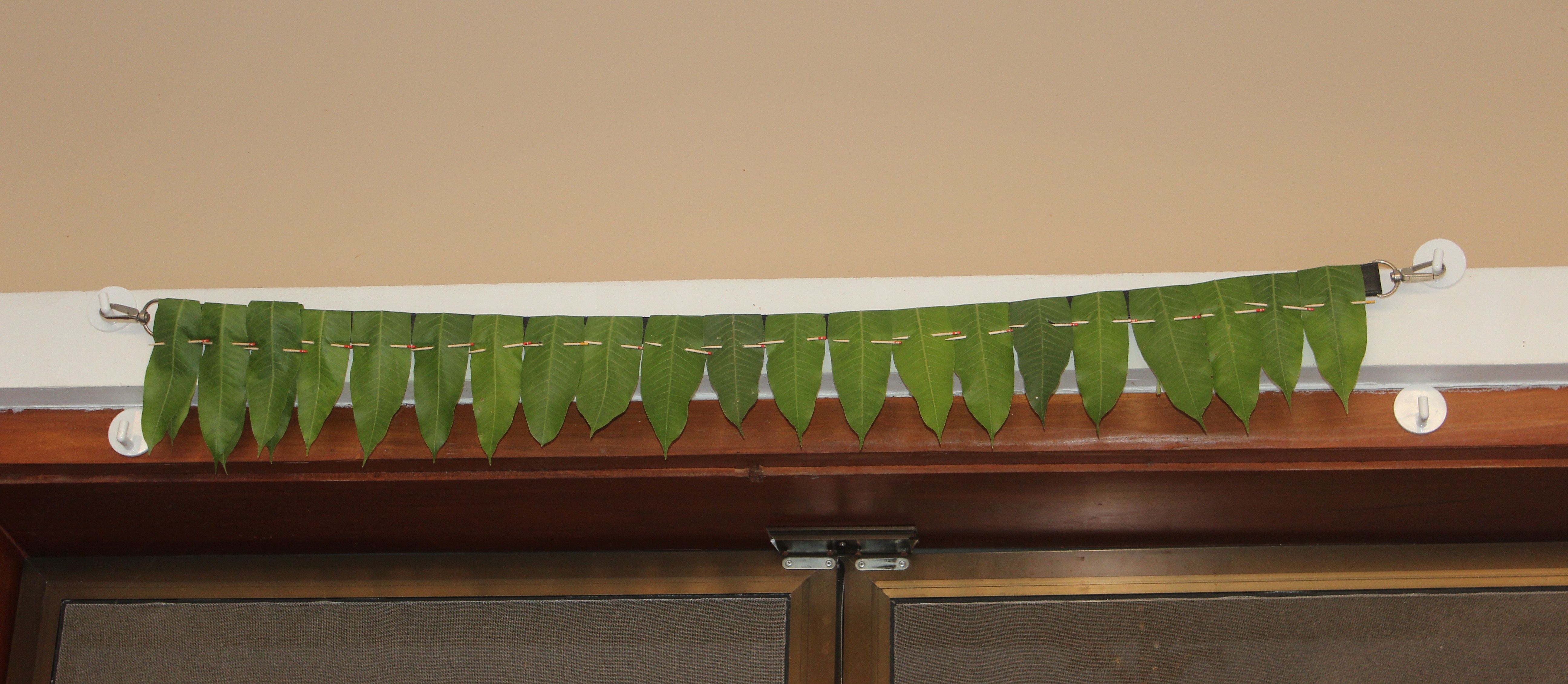From all of us at ACP, in this Sri Jaya Nama Samvatsara, we wish you a happy and prosperous (Telugu) New Year. Ugadi Subakaankshalu!
Ugadi comes from the Sanskrit term Yuga Adi, or new era.
Typical greetings include: Nutana Samvatsara Subakaankshalu or Ugadi Subakaankshalu.
While the Gujarati calendar celebrates New Year on/around Deepavali, and the Solar Tamil Calendar a few weeks after us, the Telugu (and Kannada/Marathi) New Year is based on the sidereal calendar (combination of Lunar, Solar and Stellar positions), and begins on this day.
Today we celebrate the arrival of the year 5116 (Kali Yuga reckoning), which is named Sri Jaya (last year was Vijaya Nama Samvatsara), in this 27th Chaturyuga of the 7th Manvantara (Vaivasvata) in Sveta Varaha Kalpa.
Traditions:
Mamidi-Toranaalu: Mango leaf arch (main entrance)

The Mamidi Thoranam, or Mango Arch, is a welcome and festive sign of auspiciousness.
Muggulu (Rangoli)


Muggu, or Rangoli, is the traditional art of rice flower designing. It is a colorful technique that is frequently raised to high levels of visual splendor.
Kotha battalu (New Clothes)

It is customary on this day for parents to provide children new clothes in observance of the New Year. Young couples in particular are called to the house and given these and other such gifts.
Ugaadi Pacchadi (an amuse bouche consisting of the 6 flavors):
Every family has its own special recipe for Ugaadi Pacchadi (a savoury chutney), but the primary components are the same. The Shadruchulu (theepi (sweet), pulupu(sour), chhedu (bitter), uppu (salt), kaaram (spice), gaatu (tang) are used to represent the various emotions (or flavors of life) that we feel over the course of the year. The traditional view is that whatever flavor we first taste signifies the nature of the year ahead. Some families like to game the system and pour an inordinate amount of sweet into theirs!
Typically, the following ingredients are used: Banana (for sweet, representing happiness), Neem (bitter, representing sadness), Salt (saltiness, signifying fear), Chilli powder (spice, signifying anger), Tamarind (sour, representing disgust), & Mango (tang, representing surprise).
Ingredients
- Raw mango with skin, finely chopped:1 cup
- Neem flowers: 1 tsp
- Grated Jaggery: 1 cup
- Coconut pieces, finely chopped: 1 tsp
- Tamarind pulp: 4 tsp
- Red chilli powder as required
- Salt to taste
Method
- Mix all ingredients together with little water and serve.
- Small pieces of sugarcane, piece of ripe banana, roasted gram dal can also be added.
Reference: “Relish a festive fare”. The Hindu. April 7, 2008
Temple
It is customary for Andhra families to go to the Temple on Ugadi day to get Divine blessings for the year. Panchanga Sravanam is also done after darsana.
Panchanga Sravanam (Raasee Phalaalu)

Panchanga Sravana is the recitation of astrological charts for the year. The charts (Raasee Phalaalu) are used to help guide people in making their decisions based on the influence of cosmic energy in the Universe. Whether you believe in astrology or not, it has nevertheless become a tradition.
Food:
As always, we Andhras specialize in eating, before other aspects of celebration. Here are the main items in a standard Ugadi Festival Menu:
- Ugadi Pacchadi
- Mamidikaaya Pulihora
- Garelu
- Payasam
- Bhoorelu
- Laddoo
- Kajjikaaya
We wish you all a wonderful and prosperous New Year (and a pacchadi full of jaggery! ).












very nice post and thanks 4 post this”
Telugu Astrologer USA
You can search numerous Telugu astrologers in USA but not everyone is fully accurate in providing readings.